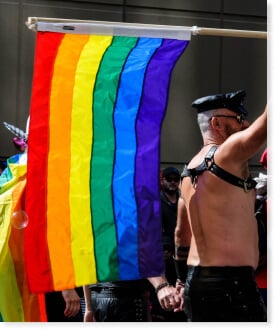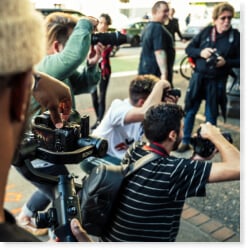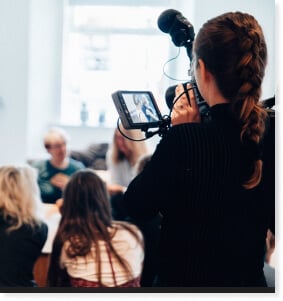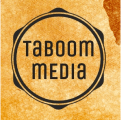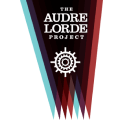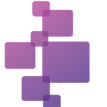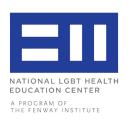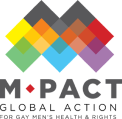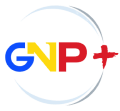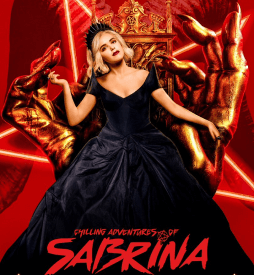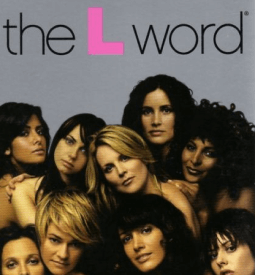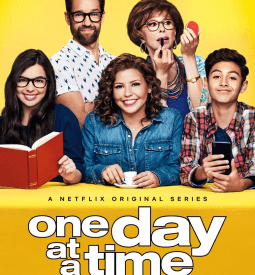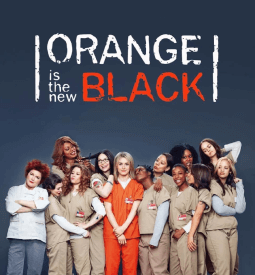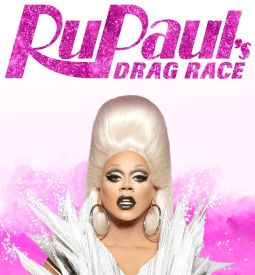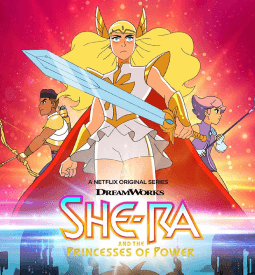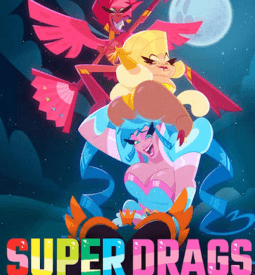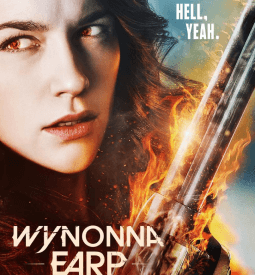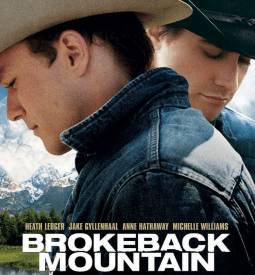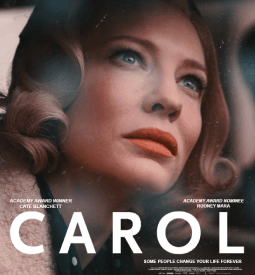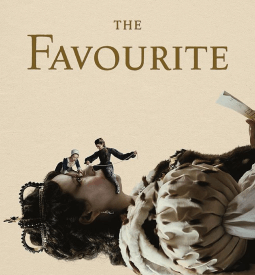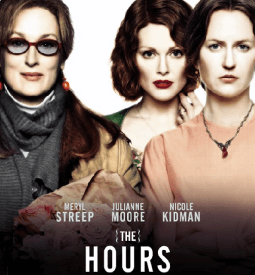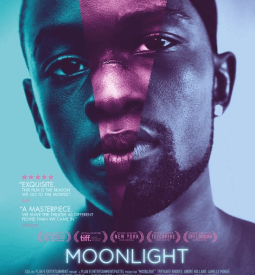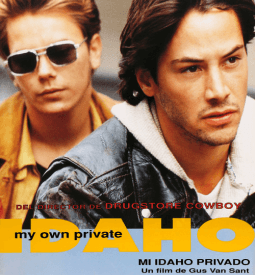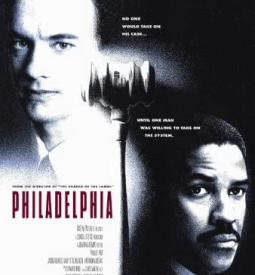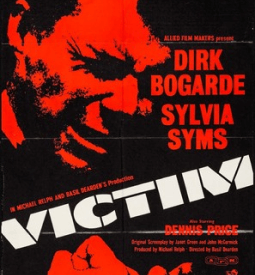What is Media?
Media representation is a powerful tool for shaping cultural understanding of people, places and groups of people like those identifying as lesbian, gay, bisexual, transgender, queer or another non-gender conforming identity.
Before focusing on the LGBTQ+ community specifically, we will take a look at the process of media representation as a whole.
The media we are most often exposed to in modern Western life are television (including streaming services) and social media but movies, plays, musicals, magazines, newspapers and even radio are still influential messengers of the cultural zeitgeist.
Media representation reminds us that when we enjoy a movie or TV show or pick up a magazine or newspaper we are not experiencing a raw reality. In fact, a lot of work, known in media terms as ‘mediation’ has gone into the production of every piece of media before it reaches our eyes or ears.
Mediation is guided by ideology and involves a process of selection, construction and anchorage.
A breakdown of that process is below:
Ideology
This is a key element of media representation that a smart media consumer will always think about whenever they come across a depiction of a character, group, place or other representation in the media.
Where media companies are independent of the state, as in most Western countries, the ideology of the owner is paramount. As media companies become more powerful, encompassing TV, movies, print media, radio, etc. the owner’s ideology becomes more influential.
Ideology includes political and religious beliefs which is why the LGBTQ+ community has had to fight for so long for accurate representation.
Of course, in a capitalist society, the owner is also driven by what they think will make money so media representation can also be driven by cultural ideology. Since media representation also shapes cultural ideology, the relationship between media and the public is a mutually reinforcing one.
Independent media groups often seek to represent their subjects in a way that contradicts the mainstream media. They may aim to correct inaccurate media representation or draw attention to marginalized groups.
In countries where the state controls most of the media, the state’s ideology will have the strongest influence.
The 21st Century has seen the emergence of a potentially more democratic form of representation: social media. Social media provides a platform for user-generated content (UGC) and owners tend to have a laissez-faire ideology. However, there is often conflict with national governments and interest groups over the amount of control and censorship that social media platforms should exert.
The personalization of social media can also lead to consumers reinforcing their own ideologies rather than consuming media that may challenge their views. For example, a supporter of a far right ideology may only like and share content from organizations they support. This may include deliberately misleading representation of LGBTQ+ people (fake news), leading to further entrenchment in their far right ideological position.
Selection
Before any piece of media is constructed the content has to be selected. For a long time LGBTQ+ people had practically no media representation at all.
When LGBT+ people finally did make it into movies, onto the TV and into news reports, only examples which fit the ideology of the dominant culture were chosen. Since conservative, Christian groups saw the LGBTQ+ community as immoral and abnormal, selection involved choosing content which reinforced this position.
This would include footage of riots and sexually promiscuous behavior and the selection of news stories highlighting criminal activity within the LGBTQ+ community.
Selection also includes choosing which images, camera shots or quotations are used from the total visual or audio material collected. This can heavily influence the angle of the piece of media.
Construction
Constructing and selection should be thought of as a twin process which happens throughout the creation of a piece of media. For example, in a magazine shoot, images might be constructed to give a powerful impression by using a low camera angle. The most effective of these might then be selected for the feature. This editor then arranges the selected images and the words (copy) received from the feature writer. They will use layout, color, typography and design as they continue to construct the feature.
In a similar way, movies and TV shows will be constructed both during filming and in the editing suite. Construction consists of both visual codes (color, position, clothing, objects, font, light treatment, etc.) and audio codes (accent, tone, pitch, etc.)
Anchorage
While visual representation works on a direct, psychological level, anchorage is used to clarify the intended message. It includes captions for photographs, tag-lines for advertisements and headlines for articles.
LGBTQ+ Representation in the Media:Today and Yesterday
Statistics from the Gay & Lesbian Alliance Against Defamation (GLAAD) have brought some welcome news for the LGBTQ+ community.
In their annual “Where We Are On TV 2019” report, they found that out of 882 TV characters, 90 from the LGBTQ+ community were represented. At 10.2%, this exceeded GLAAD’s inclusivity target of 10% .
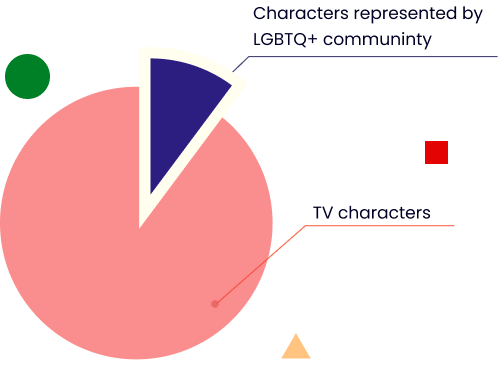
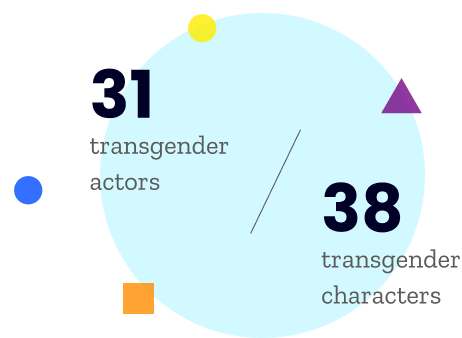
38 of the characters were transgender people (mainly transgender women) of which 31 were played by transgender actors.
This level of media representation is a far cry from the early 20th Century where people from the LGBTQ+ community were hardly featured at all. When they were represented, the media was selected and constructed to reinforce harmful stereotypes. For example, gay, lesbian, bisexual or transgender people might be portrayed as looking or acting differently to everyone else, reinforcing the widespread cultural belief of the time that they were abnormal.
Ironically, one of the ways in which these gender and sexuality norms were challenged through representation was unintentional. In the 1920s and 1930s, music producers would not allow song lyrics to be changed in any way. When a man wanted to cover a song performed by a woman – and vice versa – they would have to use the same pronouns (he,she, him, her, etc.) as in the original song. This led to the phenomenon of cross-vocals.
1920 1930
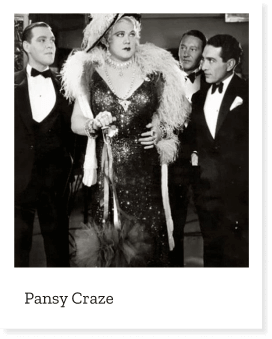
There were some positive signs of progress in the early 1930s. In Los Angeles, the ‘Pansy Craze’ became popular and began to spread across the country. This raised the profile of transgender women. Then, in 1934, the US Production Code was updated and media companies pledged to reduce the negative portrayal of people from the LGBTQ+ community.
1934
However, improvement in representation came very slowly. Transgender representation received a boost in the 1950s when Christine Jorgensen attracted media attention after undergoing gender reassignment following her military service. Performers such as Rae Bourbon, who made his name during the Pansy Craze, further raised the profile of transgender people.
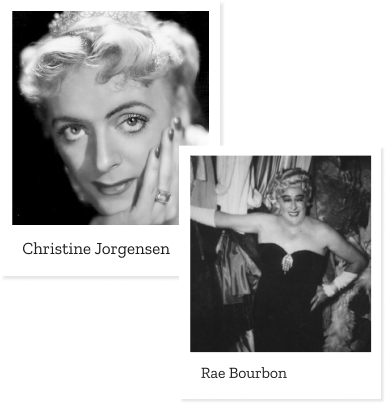
1950
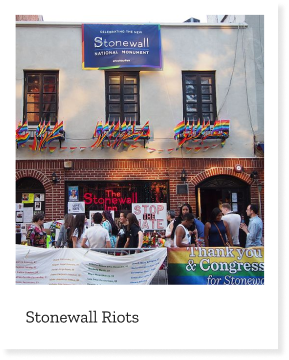
1969 marked a watershed moment for the LGBTQ+ community as a result of the Stonewall riots in Greenwich Village, Manhattan. Lashing out against police oppression, the riots gave birth to the gay liberation movement and the fight for LGBTQ+ rights.
1969
The uprising led to changes in the NAB broadcasting code. Broadcasters agreed to treat LGBT people fairly in the media and to consult the community where possible. Although representation was still minimal in the 1970s, it was more inclusive. One key example was the 1972 film ‘That Certain Summer’ which was ABC Movie of the Week. It focused on a gay man raising his family.
The AIDS epidemic had a varied effect on the media representation of LGBT people. On the one hand, the association of a terrifying disease with gay men brought a resurgence in negative representation from organizations such as the American Family Association and the Coalition for Better Television. On the other, the increased contact with people from the LGBTQ+ community helped to increase representation and challenge stereotypes.
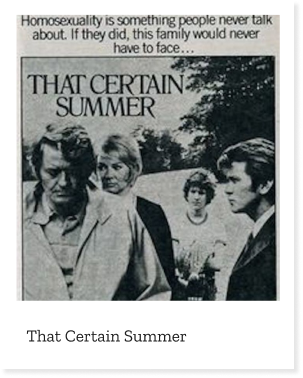
1970 1980
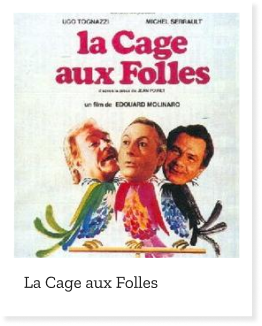
In 1983, LGBTQ+ representation reached an important landmark by breaking into Broadway. La Cage aux Folles was the first musical to feature an openly gay central plot. It featured the song, ‘I Am What I Am.
1983
In 1997, Ellen DeGeneres increased the positive representation of gay women on TV when she came out. Her TV character Ellen Morgan followed suit in the Ellen episode The Puppy Episode’.
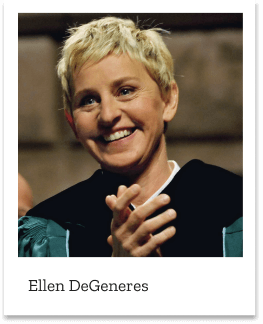
1997
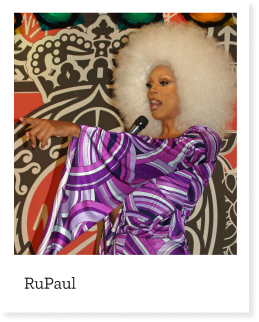
In 2009, RuPaul boosted the representation of transgender people with her popular TV show RuPaul’s Drag Race.
2009
Inclusive Language

Using inclusive language is a critical part of representing marginalized groups in media texts (movies, TV shows, musicals, newspaper reports, etc.)
What is inclusive language?
It is language which avoids using terms which might, intentionally or accidentally, exclude individuals or particular groups. A common example of non-inclusive language is the use of the pronouns ‘he’, ‘his’ and ‘him’ when talking about non-gender-specific people. This language doesn’t just exclude women but anyone who doesn’t identify as male (e.g. people who identify as intersex, queer or transgender, etc.)
Non-inclusive language can also reinforce stereotypes and help to maintain social inequalities. For example, referring to unspecified computer technicians as ‘he’ or ‘him’ plays to the stereotype of all technicians being male and doesn’t challenge the under-representation of non-males in that industry.
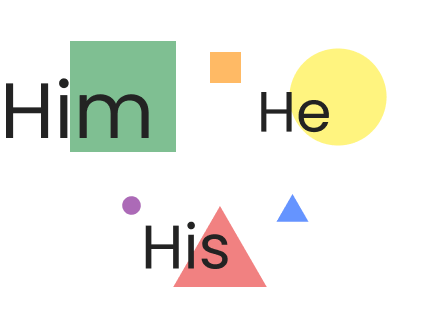
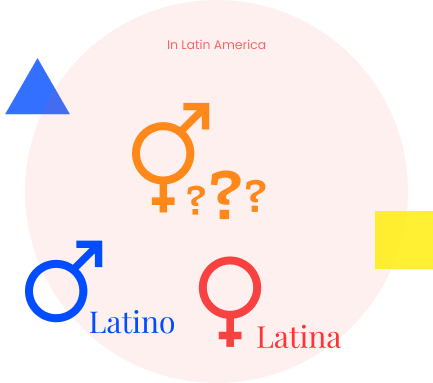
Even the LGBTQ+ label itself is regularly challenged and appears in several variations. Some transgender people object to the fact that they are included as part of a group defined by sexual orientation (lesbian, gay, bisexual). Other people object to being lumped in with the ‘+’ definition. For example, those identifying as asexual sometimes feel they are excluded by the rest of the LGBT community.
Another example of gender-inclusive language is the use of the term Latinx to refer to people of Latin American heritage. Use of the terms Latino and Latina when talking about Latinx men and women excludes those with non-binary identities.
The English singer/songwriter Sam Smith has recently raised the profile of non-binary gender identity by insisting on being represented by the gender-neutral pronoun ‘they’ in media texts.
A further example of inclusive language is the ‘people first’ approach to identifying those with physical and mental disabilities. Rather than being defined by their disability (deaf, blind, disabled, mentally ill, etc.) people from these groups may prefer to be referred to as ‘people with hearing loss’, ‘people with visual loss’, ‘people with disabilities’ and ‘people with a mental illness.’
Using inclusive language shows awareness of the structures of inequality that exist within society. This awareness is a strong foundation for challenging inaccurate media representation, including stereotypes.
Inclusive language also helps to create a safe, welcoming environment for people within marginalized groups. Using non-inclusive language often leads such individuals to feel excluded and even in danger. They may feel they are being attacked for who they are and be in conflict over whether to defend themselves or stay quiet.
Where possible, it is recommended that anyone working on a media piece (article, documentary, film, etc.) ask those they are portraying how they prefer to be identified. This will help them to feel positive about their media representation.
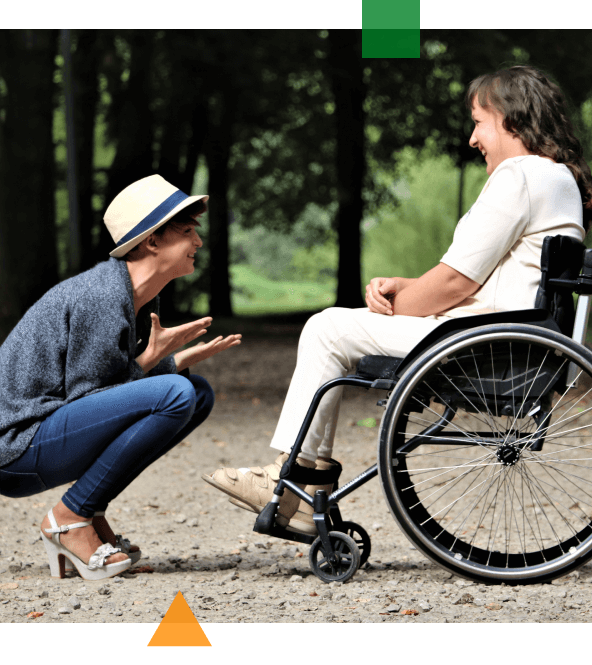
How Inclusive and Non-Inclusive Language ImpactsMental Health
Where a group of friends or a work group use non-inclusive language when talking to one another, those that are excluded feel less comfortable and more stressed when associating with the group. Often, they will decide to stop socializing with the group altogether and may become quite isolated. This is particularly the case if they don’t know anybody else who shares their experience.
Isolation has been found to have a negative affect on mental health. In fact, a 2015 meta-analysis co-authored by Julianne Holt-Lunstad, PhD, found that a lack of social contact was twice as harmful to mental health as obesity.
Dr Dhruv Khullar, a physician and researcher at Weill Cornell Medicine in New York explained how humans are social creatures and have evolved to crave the company of others. According to Dr Khullar, even short spells of isolation can increase feelings of anxiety and depression.
Worse still, people experiencing mental health difficulties experience an additional form of discrimination and often become further isolated in a downward spiral. People struggling to understand their own gender and sexual identities are labeled as attention-seeking if they speak out about their anguish or admit to substance abuse, self-harm or suicidal ideation.
If a group uses inclusive language, more people will feel accepted and are likely to continue to associate with the group, boosting their confidence and sense of wellbeing. They will be more likely to open up to other peer group members about their gender identity or sexual orientation and any issues they are working with.
The media has a big role to play in promoting inclusive language, including gender-inclusive language, to help educate the general public about diversity. In the same way as inclusive language in social groups increases wellbeing within the group, inclusive language in media representation does the same for society as a whole.
In terms of sexual orientation and gender identity, people from the LGBTQ+ community who have come out often experience rejection by their families and peers. Others, in fear of rejection, remain in the closet.
On top of this, LGBTQ+ people are painfully aware of the legacy of the past and the long history of invisibility and negative representation in the media.
Positive media representation which uses inclusive language can deliver a message that society accepts LGBTQ+ people for who they are.
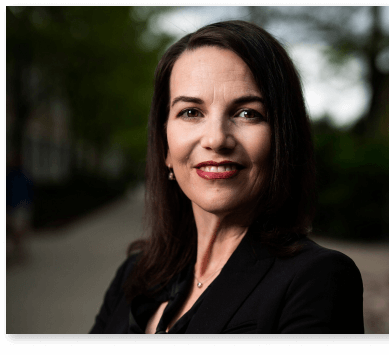
A lack of social contact was twice as harmful to mental health as obesity.
Julianne Holt-Lunstad
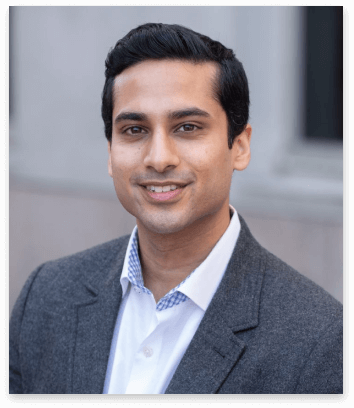
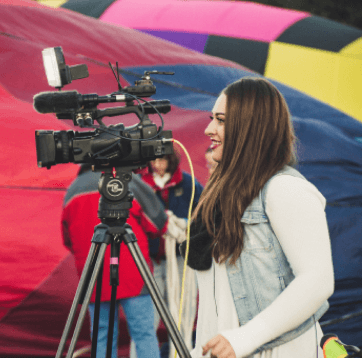
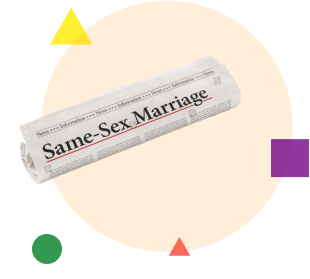
LGBTQ+Media Resources
To help media organizations represent LGBTQ+ people positively, various organizations have produced media guides. These often include glossaries of inclusive language.
Here is a list of organizations that have published helpful online media resources:
The Gay & Lesbian Alliance Against Defamation (GLAAD)
Focused on cultural change and accelerating acceptance for the LGBTQ community, most often via media.
Taboom Media
Provides media training, monitoring and response programs. Promotes ethical journalism specifically focusing on taboo subjects. Aims to replace stereotypes with accurate and respectful representation.
The Association of LGBTQ Journalists (NLGJA)
Insiders working to foster fair and accurate coverage of all workplace groups, including those from the LGBTQ community.Produces a stylebook on lesbian, gay, bisexual and transgender terminology.
The Audre Lorde Project
Supports people of color who identify as LGB, two-spirit, trans or GNC. Facilitates community organization and provides education in the New York City area.
Bi Foundation/The American Institute of Bisexuality (AIB)
Bi.org was created to let bisexual people know that they are not alone. The website was the first to provide online resources relevant to all bi people.
Bisexual Resource Center (BRC)
Committed to supporting bisexual people and raising awareness of bisexuality. Envisions a world where love is celebrated regardless of sexual orientation and gender expression.
Beyond Ex-Gay (bXg)
Provides support for people who have participated in programs to ‘cure’ them of their gay feelings. It was set up by ex-gay survivors for ex-gay survivors.
APA Office on Sexual Orientation and Gender Diversity
Applies the American Psychological Society’s research to improving the lives of LGBT people. Includes LGBT resources and publications.
National LGBT Health Education Center
Work to advance health equity and improve the length and quality of life for LGBTQIA+ people.
MPact Global Action for Gay Men’s Health and Rights
Envisions a world where the health and human rights of all men who have sex with men are recognized and respected.
Global Network of People Living with HIV
Advocating for equal access to health treatment, care and services for all people living with HIV.
The Foundation for AIDS Research (amfAR)
On a mission to end the global AIDS epidemic through innovative research. Produces media resources on HIV and AIDS.
GMHC (Founded as Gay Men’s Health Crisis)
Fight to end the AIDS epidemic and uplift quality of life for all people affected.
Somos Familia
Work to build leadership in Latinx families so that people with diverse genders and sexual orientations can thrive.
Inclusive TV Shows & Films
Popular TV Shows
Chilling Adventures of Sabrina
A feminist take on the 90s Sabrina the Teenage Witch sitcom. Chance Perdomo plays an attractive pansexual warlock called Ambrose.
The L Word
Set in trendy Los Angeles, this series follows the lives of a group of friends with a variety of gender identities and sexual orientations.
One Day at a Time
Issues around sexual orientation and non-binary gender are raised in this popular comedy about a retired army nurse corps veteran raising a family.
Orange is the New Black
Set in an all women’s prison, this is Netflix’s most popular original series. It has been praised for its treatment of gender, sexuality and body types.
RuPauls Drag Race
A long-running reality show where drag queens compete to become America’s next drag superstar.
She-Ra and the Princesses of Power
An empowering revision of the 1980s cartoon classic made for Netflix
Super Drags
A fun, animated series featuring drag queens with super powers.
Wynonna Earp
Based on the comic book series, Wynonna Earp is a queer special agent who battles supernatural forces.
More TV shows worth watching:
Popular Films
Brokeback Mountain
A dramatic mature film about a secret gay relationship.
Carol
Cate Blanchett and Rooney Mara star as secret lesbian lovers in this moving 1950s period drama.
The Favourite
A witty and darkly comedic period drama featuring lesbian relationships. Violent and bawdy at times.
The Hours
This story is focused on three women of different generations whose lives are connected by a Virginia Woolf novel.
Moonlight
A moving story about a victimized young man of colour struggling with his sexuality.
My Own Private Idaho
River Phoenix and Keanu Reeves star as two street hustlers in this arty film which deals with gay prostitution.
Philadelphia
Tom Hanks plays Andrew Beckett, a gay lawyer living with AIDS. Encouraged empathy for people with AIDS.
Victim
A daring film (for its time) with Dirk Bogarde playing a lawyer defending a former male lover on a theft charge.
More TV shows worth watching:
r
More lists of LGBTQ+ Inclusive TV Shows & Films:
- Gay Times – The Best LGBTQ-inclusive Shows you can watch right now on netflix
- NBC News – Best LGBTQ-inclusive TV Shows and Films 2019
- Digital Spy – LGBTQ TV Shows 2020
Key Questions
- What is media and does it relate to the LGBTQ+ community?
- How has LGBTQ+ representation changed over the years?
- What are some LGBTQ+ media resources?
- How does inclusive language impact mental health?
- What is inclusive language?
- What are some LGBTQ+ inclusive tv shows?
- What are some LGBTQ+ inclusive movies?

